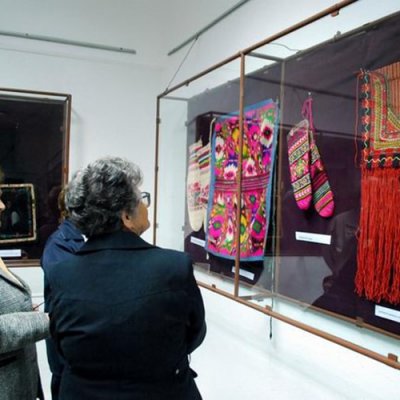04. 10. 2013
The show was presented another ethnological treasure which has NI Institute and Museum-Ohrid, without which one cannot imagine the full national costume.
The visitors had the unique opportunity to learn about the 15 authentic pairs of socks and aprons from different parts of the country, which speak of enduring artistic creation and testify to the rich tradition and history that possesses this region.
The aprons are rectangular in shape and most of them are shaped in two folds joined horizontally or vertically. Most of them are made of wool, decorated with woven decoration still in the process of weaving and are special handicrafts with striking beauty.
The aprons can be classified into simple ones, intended for everyday use and most decorated ones that are used as part of bridal dresses.
They also depicted the status, and the age of those who wore them. There were also small children’s aprons, aprons for girls, for brides and for adult women. Depending on where they originated, the name of the aprons eas different. Somewhere they were called “bofcha”, “bokcha”, “futa”, “pregacha”, but the purpose of all is the same. They were worn at the waist as safety at work, anbut were also the ornament of folk costume.
Neither folk costume could be complete without wool socks that were worn by both men and women. They show the knitting skill of the Macedonian woman, who knitted socks on five, three or one needle, mainly of wool and rarely with cotton yarn. In terms of coloring, primary colors are red, white and black, with lesser or greater presence of other colors and decoration of geometric and floral motifs. All socks are long to below the knees and richly ornamented from the foot to the top of the male socks and the female ones are the richest decorated from the foot to the ankle, the part most exposed to the eyes, because the other part was covered by a long shirt. The socks were mostly worn in winter days as protection from the cold, but also during holidays, no matter if it was summer or winter.
Exhibition “Aprons and Stockings” in the House of Robev Family





